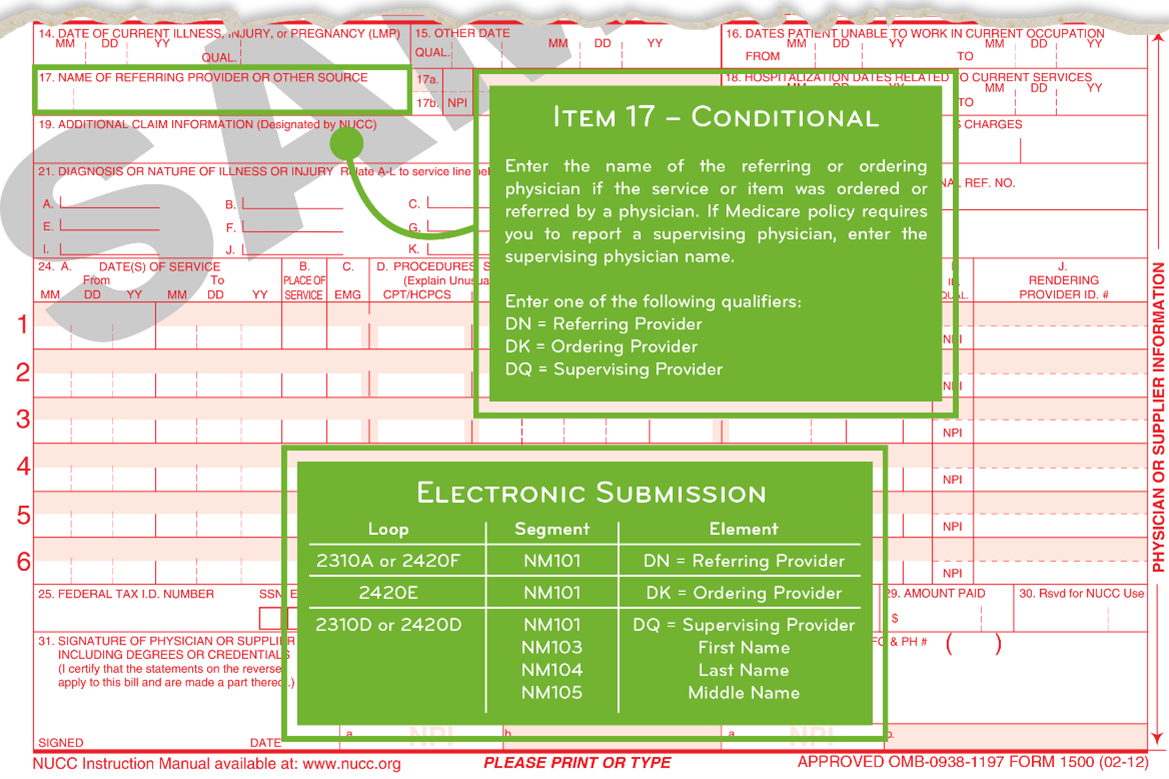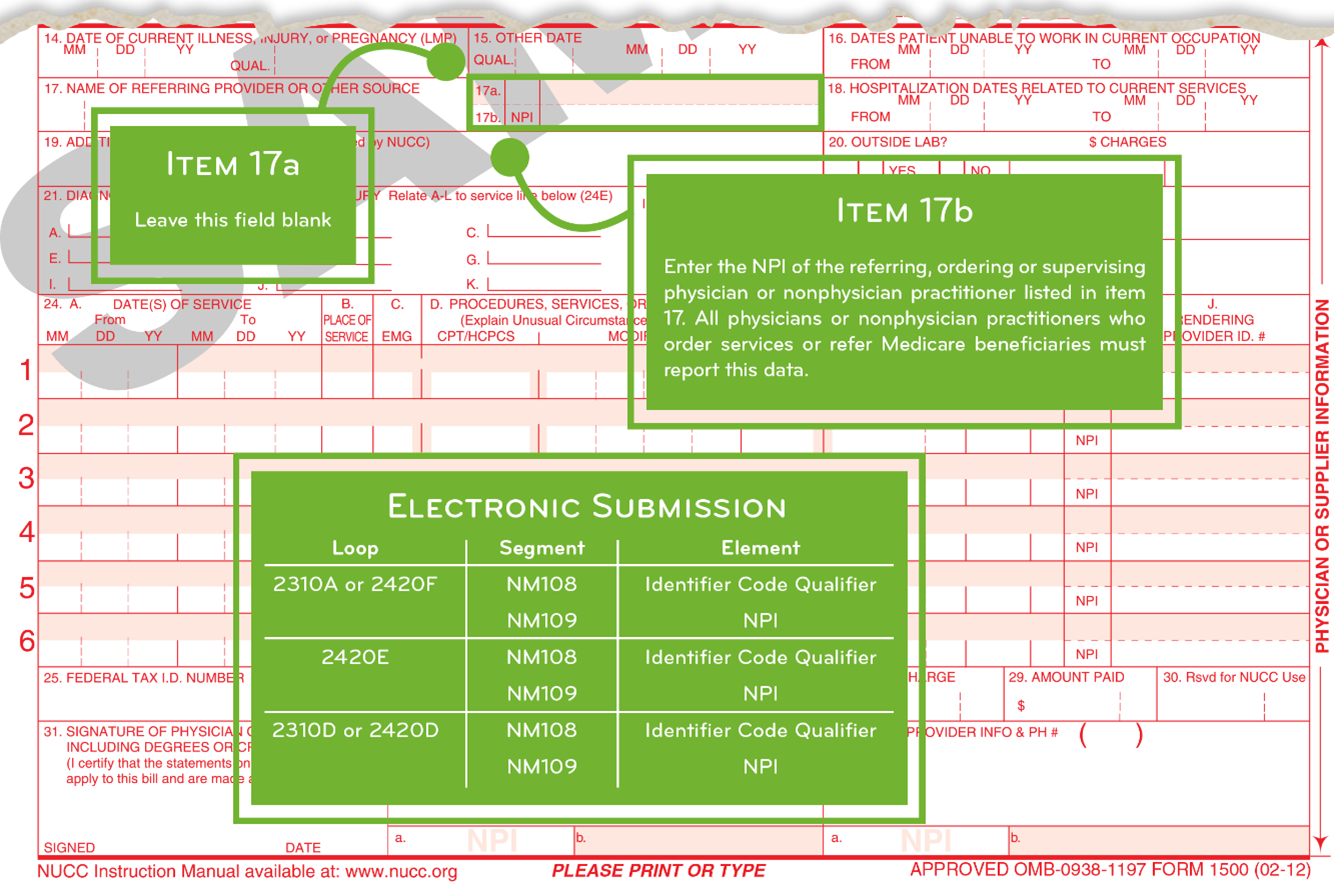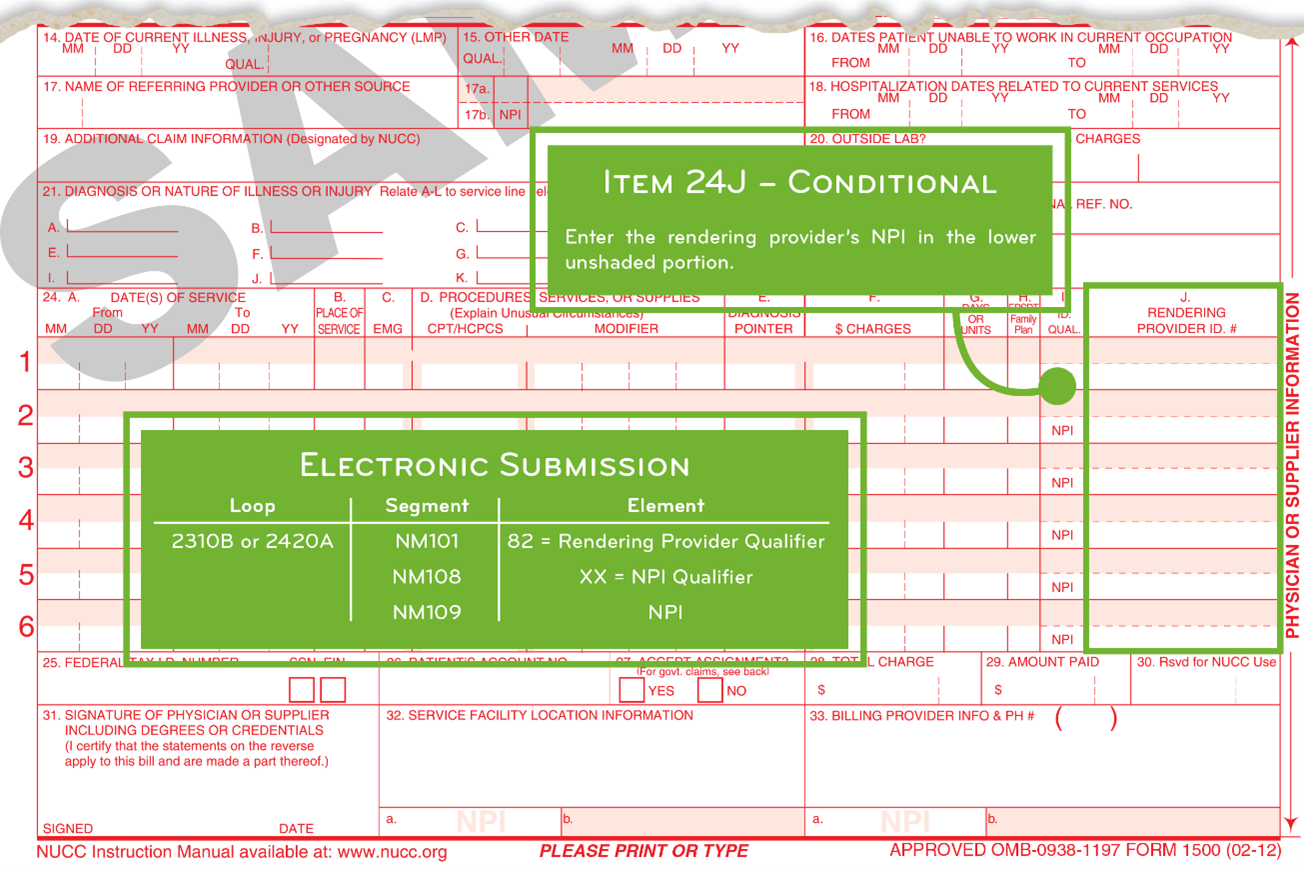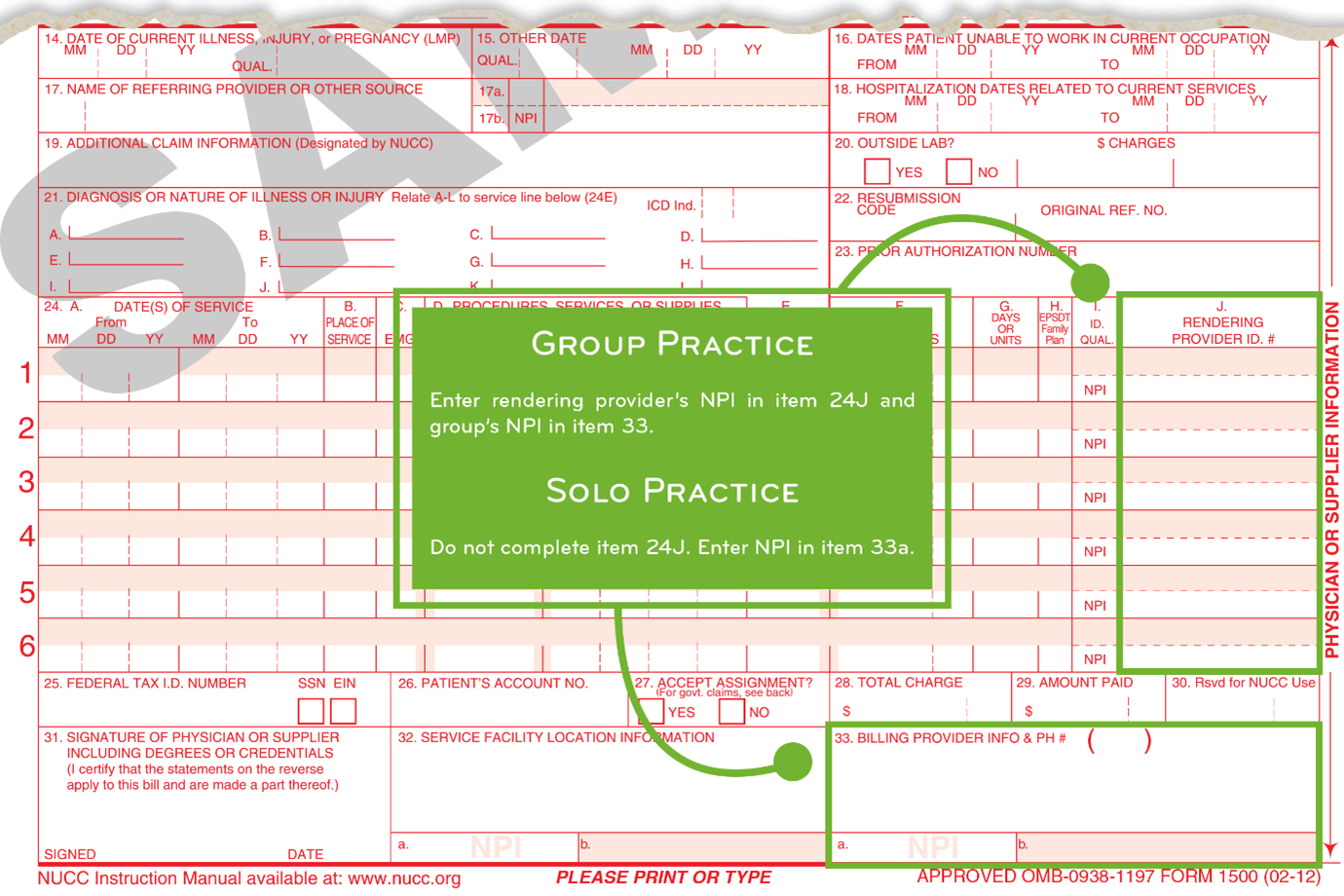Incident To: Physician's Professional Services
Incident to a physician’s professional services means that the services or supplies are furnished as an integral, although incidental, part of the physician’s personal professional services in the course of diagnosis or treatment of an injury or illness.
"Incident to" Guidelines
"Incident to" services performed in the office must meet the following guidelines:
- "Incident to” services furnished by staff of a substitute physician or regular physician are covered if furnished under the supervision of each
- Services are performed and billed in the physician's office using place of service 11 (physician's office). In a skilled nursing facility (SNF)/nursing facility (NF), the physician must establish an office and services are confined to this discrete part of the facility as his/her office. Visits performed outside of the designated “office” area in the SNF/NF would be subject to the coverage and payment rules applicable to the SNF/NF setting.
- All practitioners, whether supervising and billing or performing the services, must be actively employed by the same entity. They may be an employee, leased employee, or independent contractor.
- “Incident to" billing does not apply to a new patient or a new problem for an established patient
Medicare pays for services and supplies (including drug and biologicals which are not usually self-administered) that are furnished incident to a physician’s or other practitioner’s services, are commonly included in the physician’s or practitioner’s bills, and for which payment is not made under a separate benefit category listed in §1861(s) of the Act.
Physicians may bill evaluation and management(E/M) services when furnished by a nonphysician practitioner "incident to" his/her professional service. The physician may bill the CPT® code that describes the E/M service provided.
Note: Evaluation and management services furnished "incident to" a physician’s service by a nonphysician employee of the physician and are not as part of a physician's service are billed using CPT® code 99211.
A physician is not precluded from billing under the “incident to” provision for services provided by employees whose services cannot be paid for directly under the Medicare program. Employees of the physician may provide services "incident to" the physician’s service, however, only the physician is permitted to bill Medicare.
Services provided by employees as “incident to” are covered when they meet all the requirements for "incident to" and are medically necessary for the individual needs of the patient.
To be covered as "incident to" the physician’s service, the service must be:
- Furnished by the physician or by auxiliary personnel under the physician’s direct supervision.
- Commonly furnished in physician’s offices or clinics
- An integral, although incidental, part of the physician’s professional service
- Commonly furnished in physician’s offices or clinics
"Incident to" services are covered when performed by certified nurse midwives, clinical psychologists, clinical social workers, physician assistants, nurse practitioners, and clinical nurse specialists to assist or act in place of the physician.
"Incident to" services must be performed under the direct supervision of the physician. Per CMS, “Direct supervision in the office setting does not mean that the physician must be present in the same room with his or her aide. However, the physician must be present in the office suite and immediately available to provide assistance and direction throughout the time the aide is performing services.”
Physicians are expected to perform subsequent services of a frequency that reflects active participation during treatment for the specific problem.
When a patient is seen in a group practice by a nonphysician practitioner (NPP), It is acceptable to have an NPP perform an "incident to" service when another physician of the group is in the suite and available for oversight as needed. Group members may provide cross coverage for each other and "incident to" guidelines can be met in this circumstance. Services performed in the home by auxiliary personnel, such as nurses, technicians, and therapists are covered when performed "incident to" the physician's service only if there is direct supervision in the home by the physician.
Documentation
The documentation submitted to support billing “incident to” services must clearly connect the services of the NPP auxiliary staff to the services of the supervision physician. The connection may be evidenced by:
- Ensure the name and professional designation of the person rendering the service is legible in the documentation of each service
- Legibly identify, credentials and co-signature (i.e., M.D., DO, NP, PA, etc.) of both the practitioner who provided the service and the supervising physician on documentation entries
- Documentation from other dates of service, for example the initial visit establishing the connection between the two providers
"Incident to" service is not covered when:
- NPP can't see a new patient and the services be billed as "incident to" the physician
- "Incident to" does not apply in the institutional settings, this includes hospital and nursing facility.
- Clinical Social Workers cannot bill services performed "incident to" under their NPI
- Medical nutrition therapy and diabetes self-management training services are performed
- Immediate Relatives or Household Members reimbursement for charges imposed by a physician or his immediate relatives or members of his household are not made. It applies to items and services furnished "incident to" a physician's professional services (for example, by the physicians' nurse or technician) only if the physician who ordered or supervised the services has an excluded relationship to the beneficiary. The only exception is items furnished by an incorporated nonphysician supplier
- Diagnostic tests benefit set forth in §1861(s)(3) of the Act is separate and distinct from the "incident to" benefit set forth in §1861(s)(2) of the Act, diagnostic tests need not meet the "incident to" requirements
- Neither ambulance services nor emergency medical technician services performed under a provider’s telephone supervision, and services which have their own statutory benefit categories
Billing
CMS-1500 Claim Form or Electronic Equivalent
Claims are billed as if the physician personally rendered the services.
Item 33 of the CMS-1500 claim form or electronic equivalent = individual physician National Provider Identifier (NPI)/group NPI
Claim submitted by a group practice — Item 24J = physician’s NPI (billing for "incident to")
Name of the physician or nonphysician practitioner who performs the initial service and orders the nonphysician service must appear in item 17. Enter the qualifier to the left of the dotted vertical line on item 17 followed by the name. DN= Referring Provider, DK =Ordering Provider, DQ =Supervising Provider
Item 17:

Claims for the services listed below require the name and NPI of the certifying physician or nonphysician practitioner of the therapy plan of care be entered as the referring physician in Items 17 and 17b (physical therapy, occupational therapy, speech-language pathology services (including those furnished incident to a physician or nonphysician practitioner)

Enter the NPI of the supervisor (when the person who ordered the service is not supervising) in the lower un-shaded portion of item 24J.

When directly supervising the "incident to" service, enter the signature of the ordering physician or nonphysician practitioner in item 31.
- Enter the signature of the physician or NPP providing the direct supervision in item 31 when you are Not supervising the “incident to” service

References
- CMS Internet-Only Manual, Publication 100-2, Medicare Benefit Policy Manual, Chapter 15 (PDF), Section 60
- CMS Internet-Only Manual, Publication 100-4, Medicare Claims Manual, Chapter 12 (PDF), Section 30.6
- Palmetto GBA Interactive CMS-1500 Claim Form Instructions (JJ Part B, JM Part B)